What do we mean by collaboration?
Before diving into a discussion about creating successful collaborative working environments, let me share a definition of what I like to call PRODUCTIVE collaboration.
Productive collaboration is the action of working with someone to produce or create something.
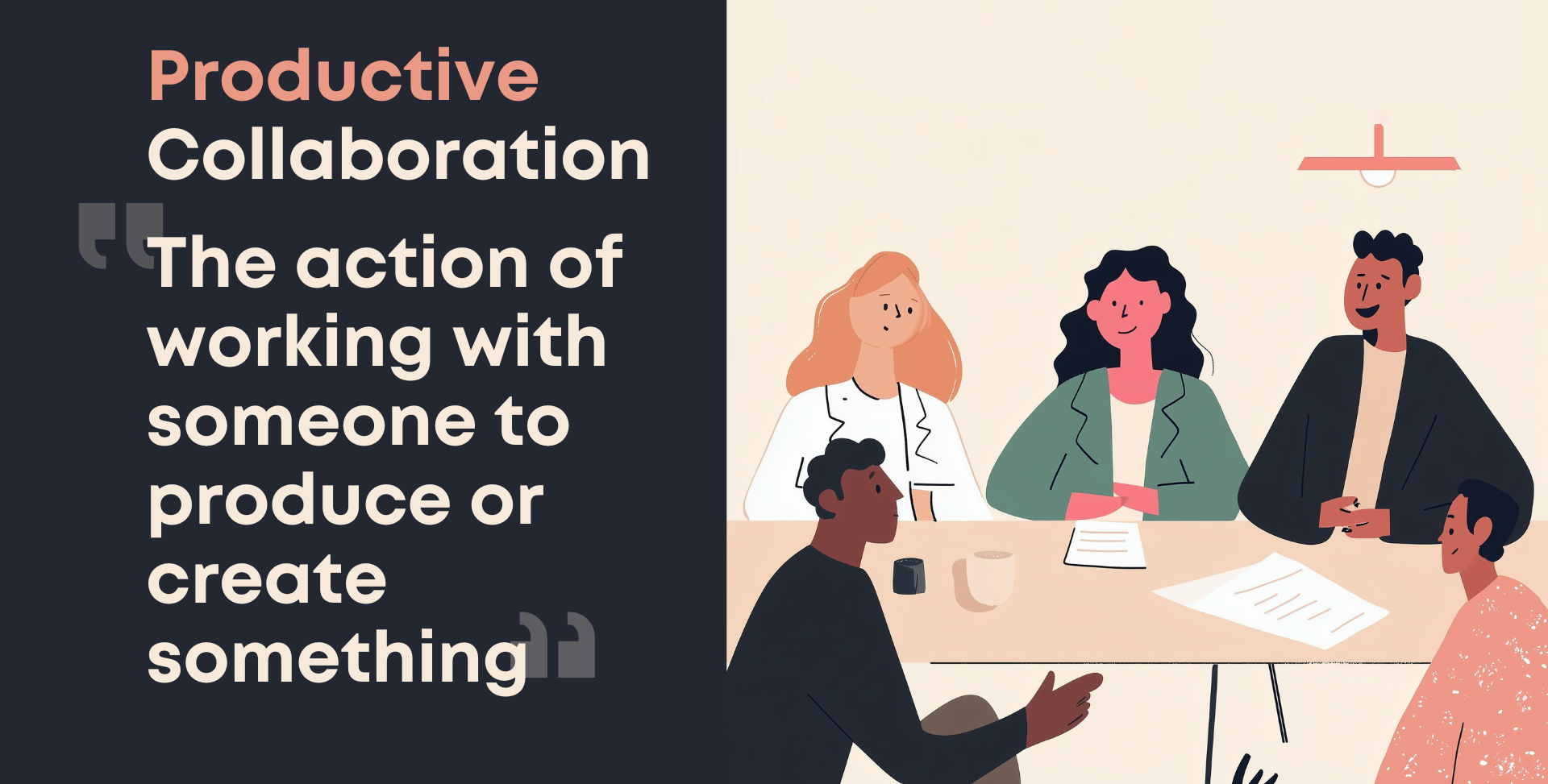
Productive collaboration is not about endless meetings, but opportunities for people to come together to work on something: creating, progressing, building. Importantly, we differentiate collaboration from other interactions that people have with colleagues in a work settling.
Often organisations mistake interactions such as coordination (“I’m handing this over to you”) or cooperation (“I’m helping you out”) and communication (“I’m keeping you up to date”) with true collaboration. The very act of collaboration often gleans new information or insights that aids the team in their journey towards reaching their goal.
Once we have established that there are different types of interaction it’s important to consider the context for collaborative interchanges – where does collaboration happen? – and provide the right settings to support and enhance the effectiveness of experience. In particular there are three main parameters that affect the type of space that should be designed to support successful collaboration, namely:
People – there is a subtle yet important difference between collaboration in pairs versus collaboration that happens in groups. In the instance that two colleagues work together to develop an idea, the ensuing collaboration can happen pretty much anywhere – in a hallway, café, at a desk or in any number of other spaces specifically designed for collaboration. When more people are involved, the spaces in which they collaborate need to support the process in order to e effective.
Intensity – the level of intensity, formality and time taken for any interaction has a profound effect on the level – and success – of the collaboration experienced. In those instances where the interaction is predominantly one-way (such as coordination or cooperation), more formal or structured (such as procedural interactions), true collaboration does not feature, and the spatial requirements of the setting for these types of interactions may be more akin to traditional meeting rooms or workspaces.
In the cases where a two-way, more flexible and creative exchange is required, (such as when groups of two or more people are frequently developing content together), very different spaces are needed to nurture the process of collaboration.
Tools – equipment and tools, such as technology, samples, stimulus, competitors’ products and communication devices not only facilitate collaborative spaces, but can also set the tone of the type of collaboration that happens there. Whether it’s high-tech interactive whiteboards, video conferencing, or the more low-tech chalkboard and flipchart easel, consideration of how the spaces can be used to facilitate collaborative work as we as inspire is all-important.

Setting the context for collaboration
Collaboration has become a buzz-word in business today, with most, if not all, of our collective clients citing collaboration as one of their top three priorities. It’s no wonder. The directive for leaders – whether from an organisational or facilities driven perspective – is to tear down silos in order to speed up communication and the exchange of knowledge. In his seminal book, “A Whole New Mind”, Dan Pink suggests that we’ve moved well beyond the age of mere “knowledge working” (term originally coined by Peter Drucker), where individuals are valued for their ability to process and progress information. But the world has changed.
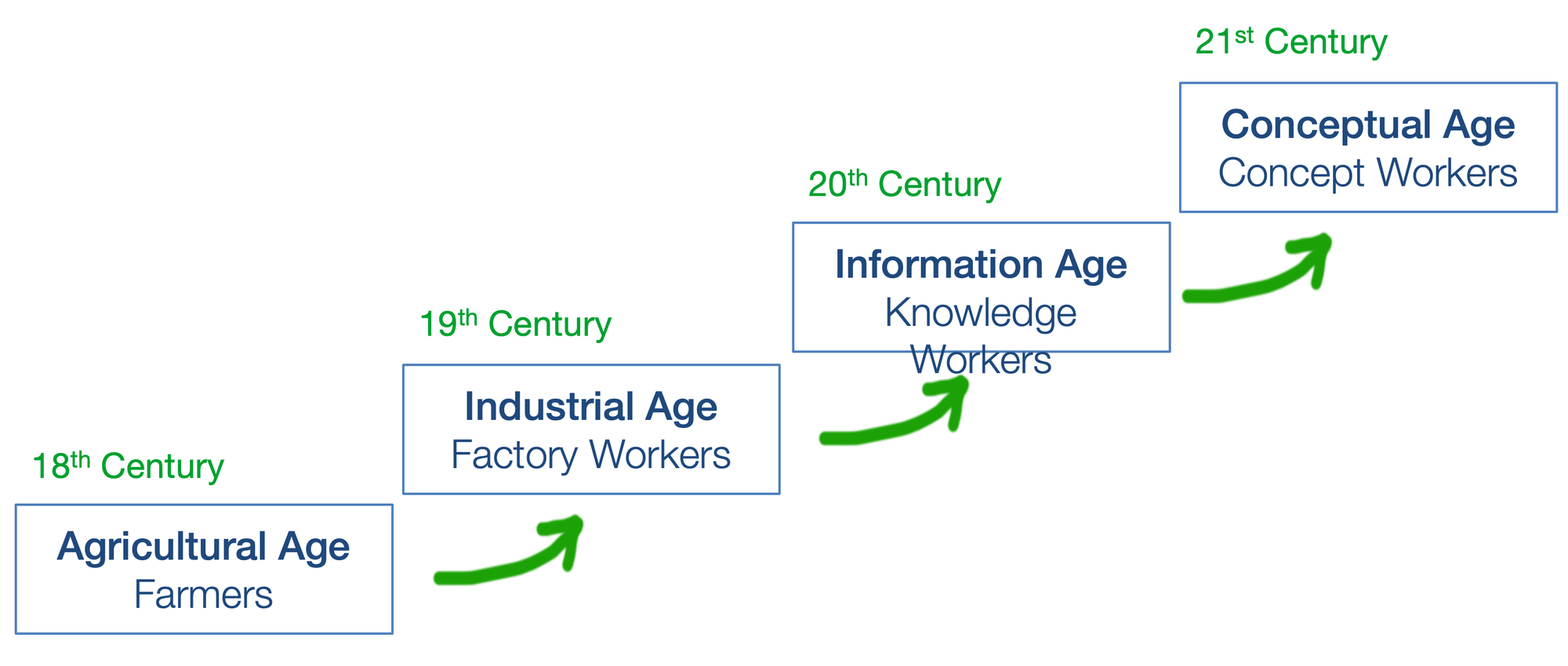
Those companies whose success was based upon efficient processing of data have been surpassed by nimble-thinking, creative ones, who can see the world differently and work in new and different ways. We have entered the Conceptual Age – an age where logical, sequential, individual activities and abilities of the past have been superseded by inventive, holistic, collaborative activities and abilities. In the Conceptual Age, collaboration aids problem-solving the development of new ideas, processes and services – it’s an important component of innovation.
Space for Collaboration
Whilst collaboration is occupying many business leaders’ minds, we discussed the importance of understanding how spaces that support collaboration need to be considered alongside other spaces that support creative activity in business.
Creativity shows up in people in different ways, and inspiration can strike at different times of the day. For some, the morning shower or jog along the river is their best time for processing problems or having ideas. Others need to be in a vibrant, buzzy place, relaxing with trusted friends. The innovation process itself requires many different modes of thinking throughout – from analytical decision-making through to care-free ‘blue sky’ thinking. These thinking modes – stimulation, where the mind is inspired or thought process triggered in some new way; reflection, a period of uninterrupted focus; collaboration, where ideas are shared and built, and play, where experimentation occurs – show up as different types of work. The physical environment should support these modes otherwise it will become a barrier and a source of stress or frustration. The danger of focussing only on creating a “collaboration environment” is that the balance of the other spaces essential for innovation may be overlooked. For example, an office where there is nowhere to go to focus on individual tasks leads to reduced productivity and people seeking out ‘quiet space’ to go to ‘think’.
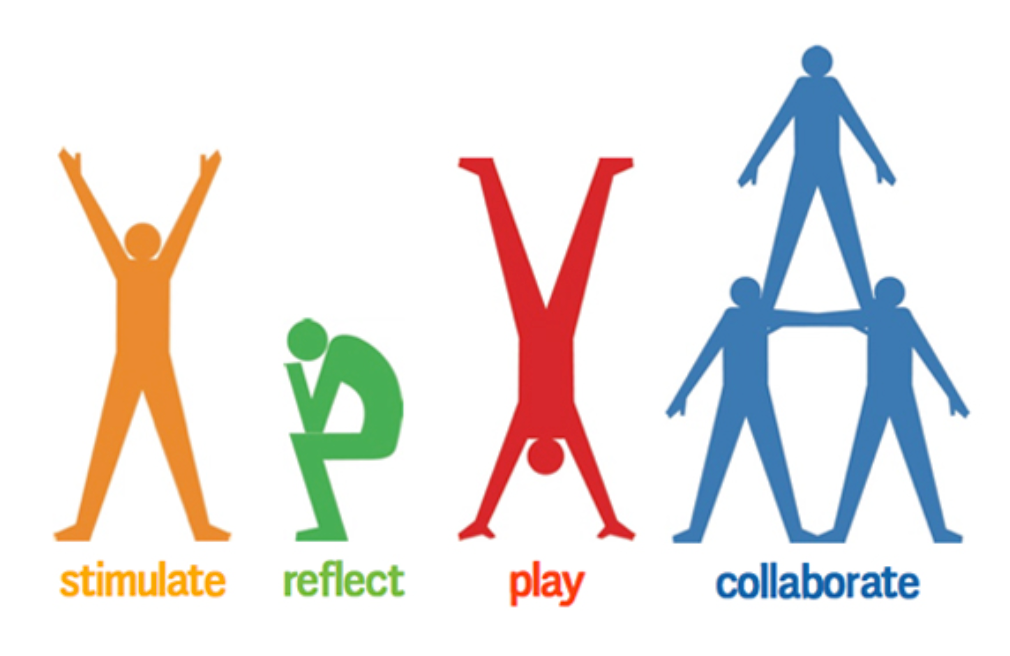
The right mix of spaces encourages people to stay in the office, instead of leaving for coffee bars, home or other ‘third places’ – and when well-designed, they orchestrate impromptu, informal interactions away from desks – which can lead to some of the best types of collaborative exchange.
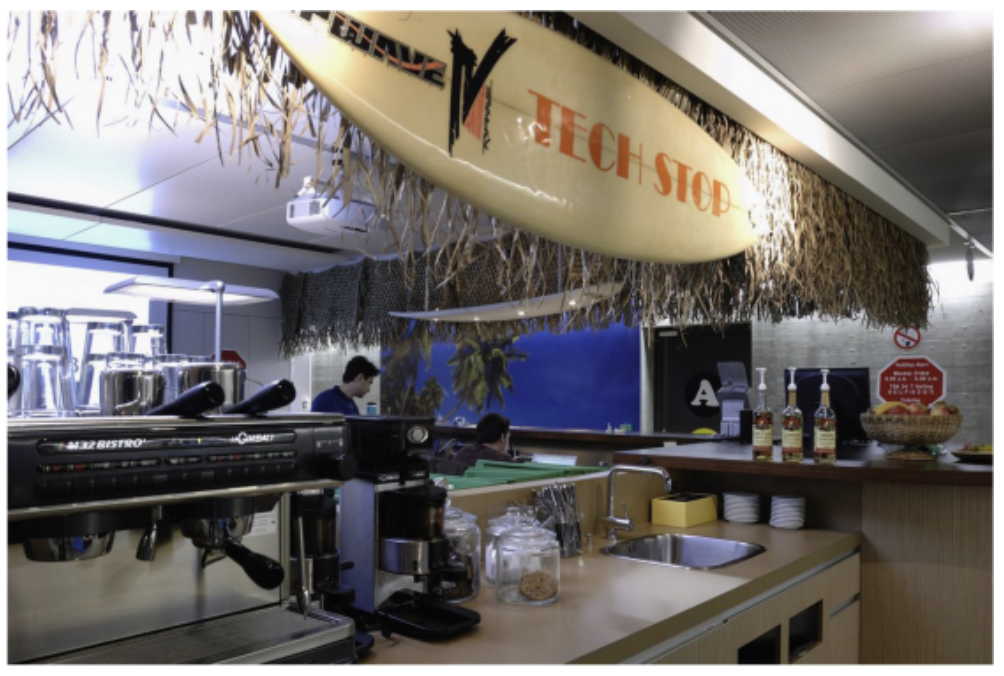
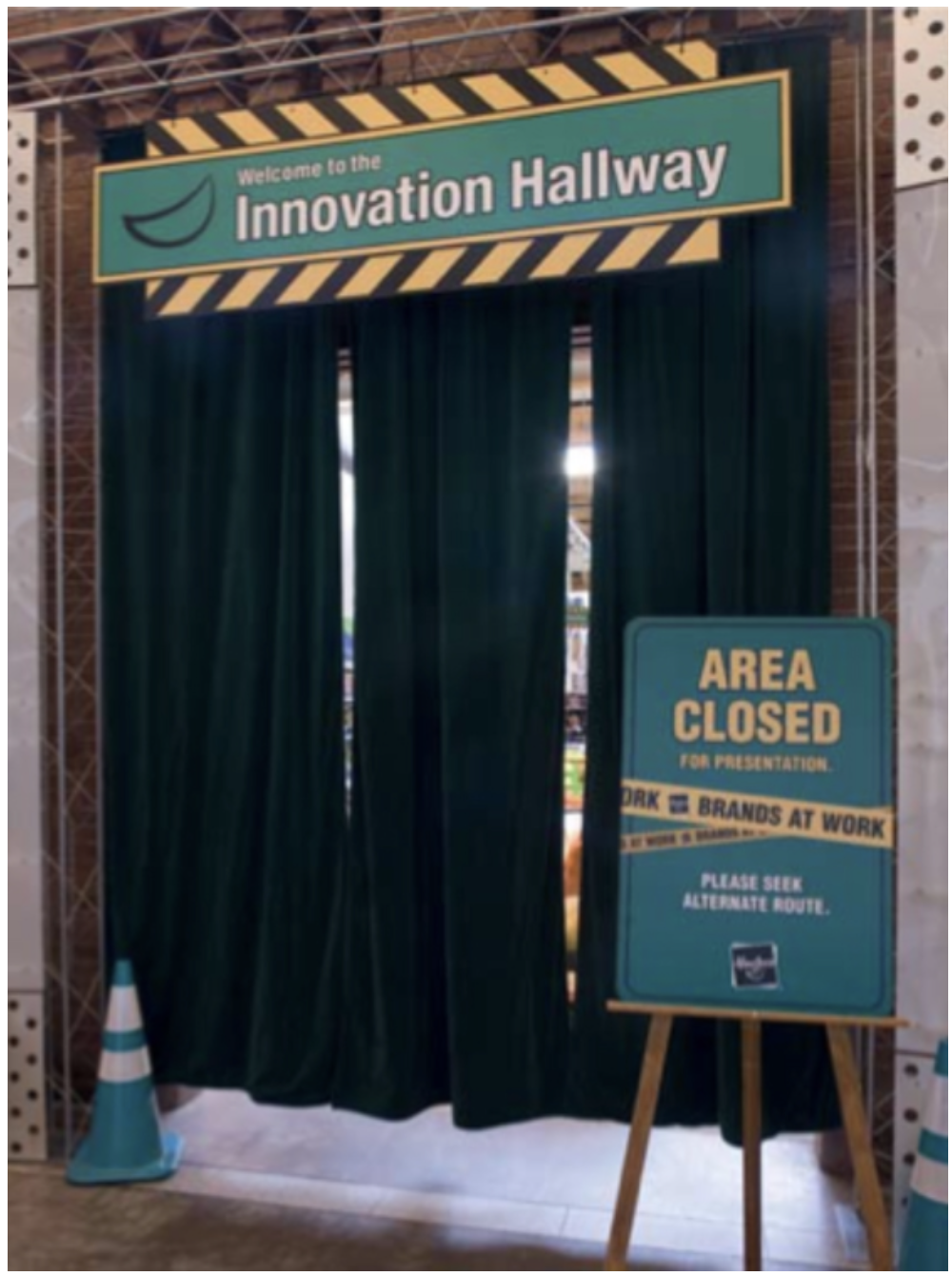
Defining the right collaboration spaces for your organisation
Kursty shared some of the tools and methods she uses to identify the types and tone of collaboration spaces in the workplace as well as ensuring the balance of creative space is right:
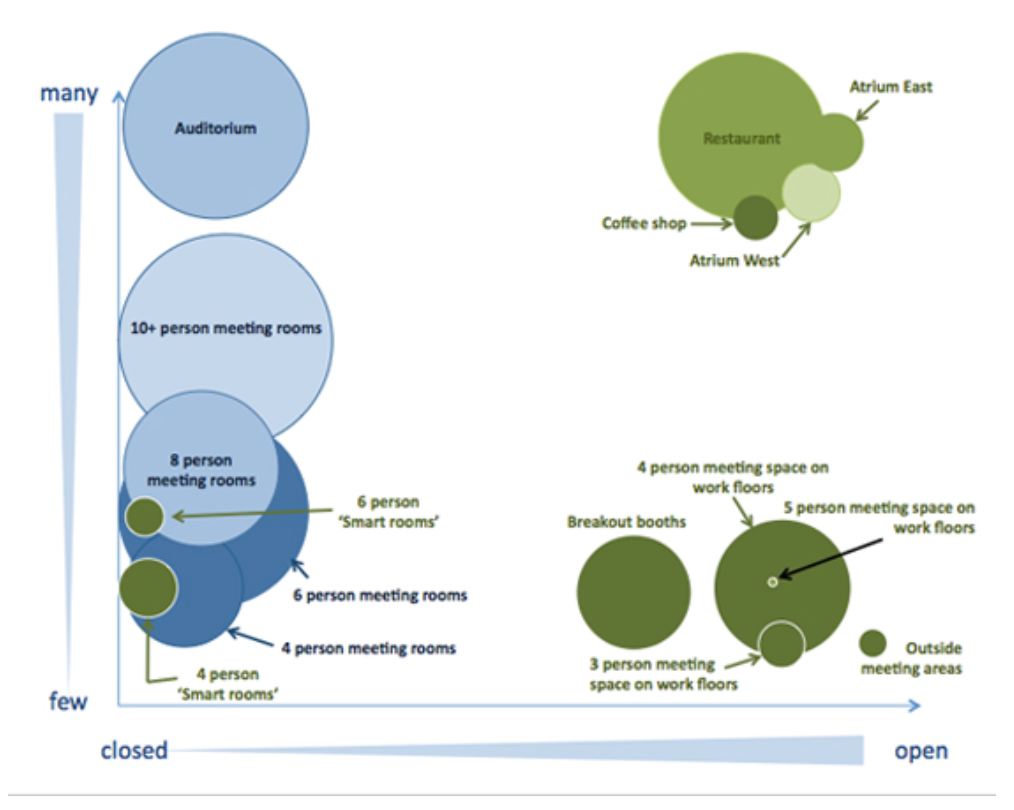
When you get it right, designing collaboration into the workplace can boost productivity as well as company culture, enabling people to do both their work better and enjoy doing it too! It’s important to note also that some of the most successful collaboration spaces evolve from existing behaviour, so be on the lookout for those successful spaces, learn from them and make the most of them!
